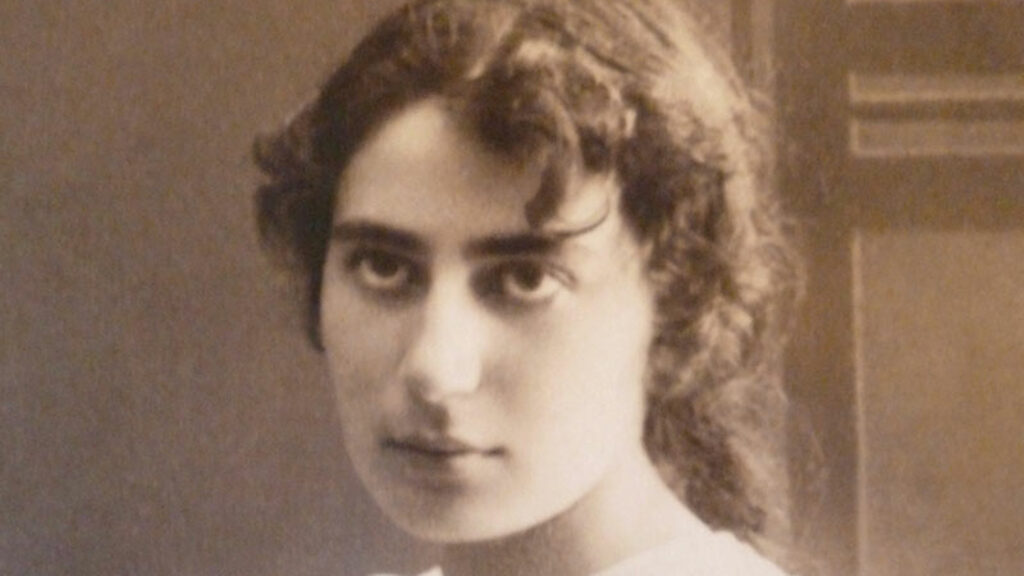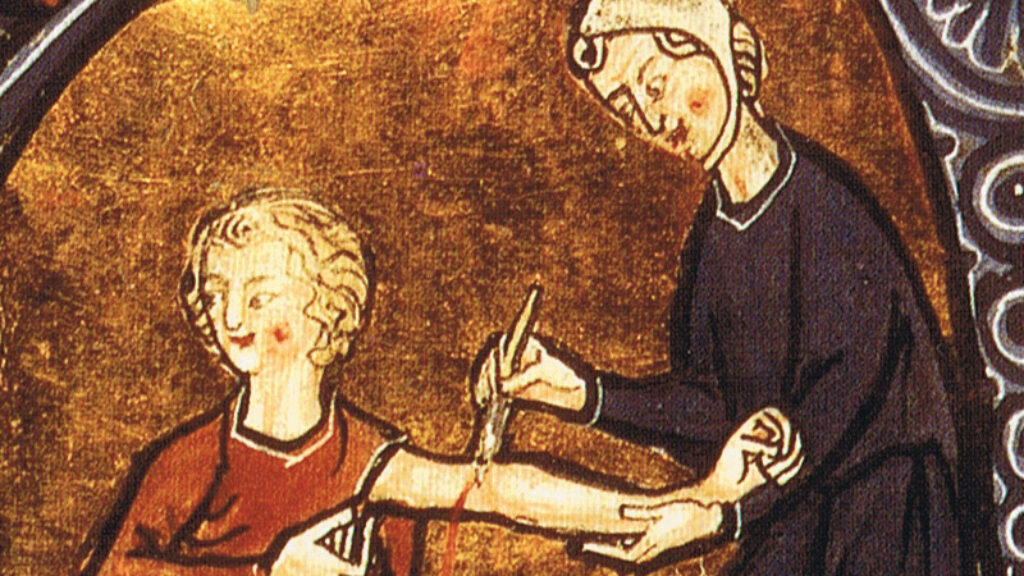Letters, Summer 2022
Orthodox Lens?
Like many Jewish American women of my generation, I was a devoted reader of the All-of-a-Kind Family series. Rebecca Klempner’s review of the new biography of its author, Sydney Taylor (“All-of-a- Kind Americans,” Winter 2022), while largely positive, includes some puzzling criticisms of the late distinguished scholar June Cummins. The reviewer at times interprets Taylor’s life and legacy through a lens of Orthodoxy, which occasionally distorts the author’s life. Sarah Brenner, later Sydney Taylor, met her husband, Ralph, at the Young People’s Socialist League. The two shared a strong Jewish cultural identity, not a religious one. It is not true, as Klempner states, that Ralph “was far less interested in Jewish life.” As Klempner herself points out, Sydney Taylor “was not very religiously observant as an adult,” even before her marriage. Attributing this choice to her husband implies that the author would perhaps have been traditionally religious had she not married him.
More significantly, From Sarah to Sydney is an academic book, published by Yale University Press. Readers should question Klempner’s comment that “it must be admitted that it is not an easy read” and that Cummins “sometimes forgot the needs and interests of the reader.” Which reader is this? This is neither a book for children nor a popular biography but rather a detailed and exhaustively researched scholarly work. Attributing its lack of entertainment value to Cummins’s long struggle with illness is inapt, as is Klempner’s suggestion that the book may have been substantially different in this regard had Cummins survived to complete the final manuscript.
Emily Schneider
New York, New York
Rebecca Klempner responds:
I thank Emily Schneider for reading my review so closely, which is not to say that I agree with her criticisms. Every reviewer offers a subjective interpretation; that mine is informed by my particular place in the world (an Orthodox Jew, a woman, a writer of fiction and personal essays) is natural. However, I do not believe I misled readers here. Ralph certainly did not make Sydney Taylor leave Orthodoxy—clearly, she had already left before meeting him. However, there are many religious observances non-Orthodox Jews do engage in, and these, too, were absent from the Taylor home. Cummins quotes Taylor herself as saying: “In my own home I observed none of the customs I’d enjoyed so much in my childhood— principally I suppose because my husband was so irreligious.”
Schneider also takes exception to my remark that From Sarah to Sydney is “not an easy read,” pointing out that it was published by Yale University Press. But an academic book requires structure and pruning no less than trade books, even if the genres are different. I do not believe this book is as well organized as it could be. The moving acknowledgments by Cummins’s husband, in which he recounts her heroic struggles with ALS while writing the book and its posthumous editing and publication, suggest at least some of the reasons why this is so. I invite readers to judge for themselves.
Kafka’s Gimel
In his review of the new book about Franz Kafka’s drawings (“Graven Images,” Spring 2022), Benjamin Balint writes that “the longer you look at Kafka’s lines, the more calligraphic they look, like dissolving handwriting or hieroglyphs or leaning letters in an illegible language.” One of the drawings reproduced in the article appears to me to be quite clearly the Hebrew letter gimel anthropomorphized. I wonder if any other drawings of Kafka’s seem to be based on Hebrew letters.
Ruthie
via jewishreviewofbooks.com
True Crime or Conspiracy Theory?
I object to Professor Inbari’s “Kidnapping History” (Spring 2022). I am the author of My Memoir as an Activist for Israel And Yemenite Jews, which is, in part, an English language review of the Yemenite Children Affair. Among other things, I reviewed the testimony of Avigdor Peer, former assistant director of the Division for Aid to Immigrants of the Ministry of Social Welfare. He broke thirty years of silence to inform the Knesset Interior Committee on November 27, 1985, that on his watch tens of hundreds of babies were taken from baby shelters in absorption camps, hospitals, and clinics and given to four women’s organizations: Working Mothers (Ma Amat) of Mapai (WMO), Agudah Women (Mizrachi), Emunah Women (NRP), and the General Zionists Women’s Organization. I also quote from Avraham Sternberg’s Hebrew book A People Is Absorbed:
The late Dr. Yosef Israeli, who was in charge of the Southern District for Medical Services of new Immigrants, found the solution. . . . He transferred tens of hundreds of children from the hospital to the World Zionist Organization’s Children’s Home in Jerusalem, Tel-Aviv, and Tsfat. Often the children stayed there for many months. Ambulances were used with nurses accompanying them. World Zionist Organization Institutions were constantly filled with many Yemenite children.
In both the above examples, Israeli officials admit that babies were taken away without parental approval. Hundreds if not thousands of babies were taken away by Israeli officials without their parents’ permission.
Sampson Giat
Southampton, New York
Motti Inbari responds:
I want to thank Mr. Giat for his lifelong service to the Yemenite community in Israel. He quotes a relatively low-ranking Israeli official who said children were taken without parental approval and transferred to different women’s organizations. As I wrote, if the medical crew detected symptoms of diseases, the children were indeed taken for medical care without their parents’ approval. If a baby died, the medical staff apparently performed an autopsy and then buried the baby without the parents’ permission or participation. This was, to say the least, misguided and improper, and for that, the State of Israel is offering compensation to the families who were involved.
But none of this proves that Yemenite babies were kidnapped and given to Ashkenazi parents for adoption. Today, DNA tests help people worldwide discover biological parents they never knew they had. Yet thousands of DNA tests have been conducted in Israel among the Yemenite community and the general Israeli population without any such revelations.
The fact that many Israelis still believe in this kidnapping narrative testifies to the power of conspiracy theories, particularly among people who don’t trust the good faith of the authorities. The Yemenite Children Affair was investigated by four different commissions, including the highest commission of inquiry headed by Supreme Court justices, and they all concluded that the lost babies died in infancy. Nonetheless, this narrative has rooted itself among some Israeli elites, including politicians, journalists, and academics. I ask readers to judge the historic events by the available facts. Yemenite families were indeed treated poorly, but their babies were not stolen from them.
Of Censorship and Naughty Boys
I read with interest Marc B. Shapiro’s reconsideration of Nathan Kamenetsky’s censored book Making of a Godol and the issue of haredi (or ultra-Orthodox) censorship (“On Re-Reading a Banned Book,” Spring 2022), which Shapiro has also written about in his book Changing the Immutable. However, there is one subject that today’s black-hat world censors that Shapiro seems to avoid. Let me give an example: the haredi newspapers Yated Ne’eman and Hamodia both published hespedim for the Satmar Rebbe (Rabbi Yoel Teitelbaum) on the occasion of his fortieth yahrzeit in 2019. But neither newspaper mentioned anything about his opposition to Zionism. Nothing about his magnum opus Vayoel Moshe or Al Hageulah. To write a eulogy of the Satmar Rebbe without writing about his opposition to Zionism is like writing a biography of George Washington without mentioning that he was the first president! Similarly, back in October, Yated Ne’eman wrote a hesped for Rav Shach’s twentieth yahrzeit and didn’t mention his opposition to the settlements or Menachem Begin’s war in Lebanon. I come from a “yeshivish” black-hatted background (as you can tell from my diction). I grew up with ArtScroll books and went to black-hat yeshivas. I was always a good learner, but I didn’t know about the Satmar shitta on Zionism until I became a naughty boy and started doing research in the libraries and reading enlightened Haskalah-type publications, such as the Jewish Review of Books.
So that brings me to my next point: Shapiro mentions haredim being anti-Zionist and censoring the fact that one or another “rosh yeshiva . . . was a Zionist in his youth,” since it might convince some reader that Zionism was a legitimate political position. But today, unfortunately, thanks to haredi censorship, you are not going to find out about the Satmar shitta or the political positions of most of our earlier gedolim by reading ArtScroll books, Yated, or Hamodia. In other words, I am coming to the exact opposite conclusion from Shapiro. Most of today’s haredim are in fact hard-core Zionists without being officially Zionist. Haredi publications censor what it means to be a true, authentic Orthodox anti-Zionist Jew, because it might tempt someone to reconsider anti-Zionism legitimate: Bernie Sanders or Peter Beinart might be right (or Pat Buchanan or Ron Paul).
Yehuda Littman
Brooklyn, New York
Marc B. Shapiro responds:
Mr. Littman is correct that current haredi censorship often covers up views that are regarded as too anti-Zionist. However, the model of censorship remains the same: anything in the history of the community that diverges from the current haredi Daas Torah is a threat, and thus, the authorities of the haredi media are quick to cover it up.
Liberating Casablanca
The sources collected by Sarah Abrevaya Stein and Aomar Boum (“North Africa during World War II,” Spring 2022) struck close to home. My father was in the US Army Air Corps and was part of the invasion of North Africa in November 1942. Upon arriving in Casablanca, he and another Jewish soldier went to the ghetto, a walled-in section of town with locks on the gates. As my dad put it in his WWII memoirs:
When we got there, someone had already blown open the gates so Sandy and I . . . went in to look around. We asked some people if they were Jewish and if there was a Rabbi. They wouldn’t talk to us at first . . . but Sandy spoke a little French and he made them understand that we were Americans . . . and that we were also Jewish. Finally they told us to go to a certain building and that we would find Jews in the basement. We went there and explained they were free to go, the Germans and Vichy French were no longer in charge, and that we Americans had taken over. That was a real eye opener, that all those stories about how Jews were treated were true.
From Casablanca, my dad and his outfit went through Algeria and Tunisia before leaving north Africa for the invasion of Sicily in July 1943.
Dennis Halpin
Houston, Texas
Remembering a Lone Soldier
Thank you for the elegiac remembrance of Alex Singer on Yom HaZikaron (“A Lone Soldier,” online, May 3, 2022). I was the Hillel director at Cornell during most of Alex’s time there. He and several other members of the class of 1984 made aliyah after graduation; others went on to important roles in Jewish communal life in the US. Alex was a person bursting with charisma and enthusiasm. I have visited his grave on Mount Herzl more than once to share some of his poetry with younger students and to stand in solemn respect for his life and his sacrifice.
Rabbi Laurence Edwards
via jewishreviewofbooks.com
Comments
You must log in to comment Log In
Suggested Reading

Lives in Translation
The elegant essays in Hillel Halkin's new book are the fruit of a lifetime devoted to Hebrew literature.

Forging an Identity
How did a young Sephardi polyglot from Constantinople transform himself in Mexican society?
Conservative Judaism: A Requiem
In 1971, 41 percent of American Jews were part of the Conservative movement. Today it's 18 percent and falling fast. What happened? Maybe its leaders never knew what Conservative Judaism was really about.

No Balm
A new book on talmudic medicine illustrates the ills of modern academia, argues Shai Secunda.
Eliezer
I thought Dennis Halpin might be interested in the linked episode from the Eternal Light radio series, in which two American GIs encounter Jews in Casablanca during the war, with follow-up in Israel.